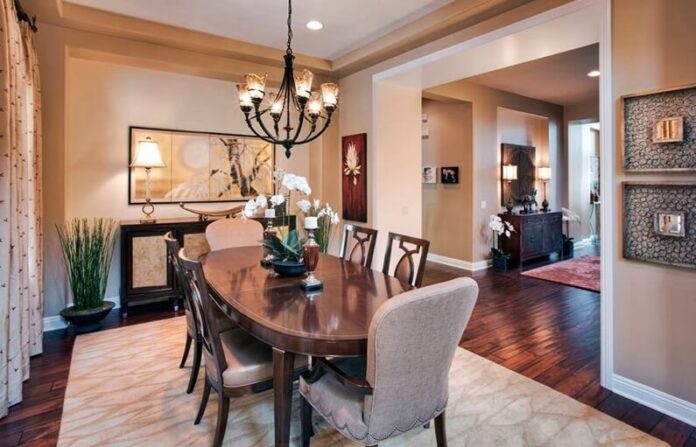
When Chinese people taste dishes, they usually pay attention to the color, fragrance and taste. In addition to the delicious taste, they also need to have a “presentation”. In layman’s terms, the food must have a good appearance. The appearance of dishes is not only affected by the color of the ingredients and condiments, but also requires proper lighting. As long as you pay attention to commercial catering shops, we will find that they have done enough work on lighting design. Similarly, for home restaurants, reasonable lighting design is equally important. So, what exactly should the lighting design of a family restaurant do?
1. Basic light distribution requirements
1. In terms of illuminance, restaurant lighting often does not require too high illuminance. The light beam can take care of the entire table and illuminate the dishes and dining operation areas within the table. According to the recommendations of the “Lighting Standards for Residential Buildings”, the illuminance used by the 0.75m dining table in a home restaurant can be controlled at 150Lx.
2. In terms of color temperature, we have always believed that the restaurant lighting should be based on warm colors, and it is not recommended to use lamps with too high color temperature. Generally, the color temperature of a home restaurant should be controlled between 2700K-4000K, and it is not recommended to be too high or too low.
3. In terms of color rendering, as we said earlier, the “sale” of meals depends on the light. The higher the color rendering value, the stronger the ability of the light to restore the true colors of the dishes. According to architectural lighting design standards, it is recommended that the color rendering of the light in the home restaurant should be Ra>85.
2. Lighting configuration
Under normal circumstances, the lighting fixtures directly above the dining table are generally small chandeliers. When the soft light is concentrated in the center of the dining table through the down-illuminated lampshade, it is easier for family members or relatives and friends to focus their attention on the dishes.
It is worth noting that the restaurant space is usually close to the kitchen and is easily wetted by the “fog” from the food, so the wood and fabric lamps are not suitable. Glass, stainless steel, and acrylic lamps have a smooth surface and do not absorb water, making it easier to clean. As for the “artifact” of crystal lamp, we don’t recommend to install it in the restaurant or kitchen.
Regarding the hanging height of the chandelier, we usually recommend that the bottom of the lamp is about 60cm away from the desktop. If there is a big man in the house, it should be increased appropriately. What needs to be mentioned is that when we choose a restaurant chandelier, we must choose a style that can be adjusted in height, so that it will be more convenient when tall relatives and friends come to the house later.
Regarding glare, usually as long as we install the light source up and down two-thirds of the chandelier shade, glare will appear if the installation is too low, and the beam will be too concentrated, making the illumination range insufficient.
3. Some matters needing attention
1. If the height of your restaurant is relatively low (such as hanging over the ceiling), then abandon the chandelier and switch to a ceiling lamp or downlight, supplemented by wall lamps and light strips. You must not blindly pursue the decorative effect of the restaurant chandelier.
2. For restaurants with chandelier as the main light source, wall lamps can be installed or not. The installation is only for decoration and has no major effect on functional lighting.
3. For an open dining room, the dining room, living room and even kitchen are all connected as a whole. When we choose the lighting in the restaurant, we must consider the coordination of the overall style. All Chinese styles use Chinese style, and European styles use European style.
4. The restaurant is just a place to eat. Don’t make the restaurant’s lighting or even the decoration design too eye-catching to avoid the situation of “overwhelming guests”!
